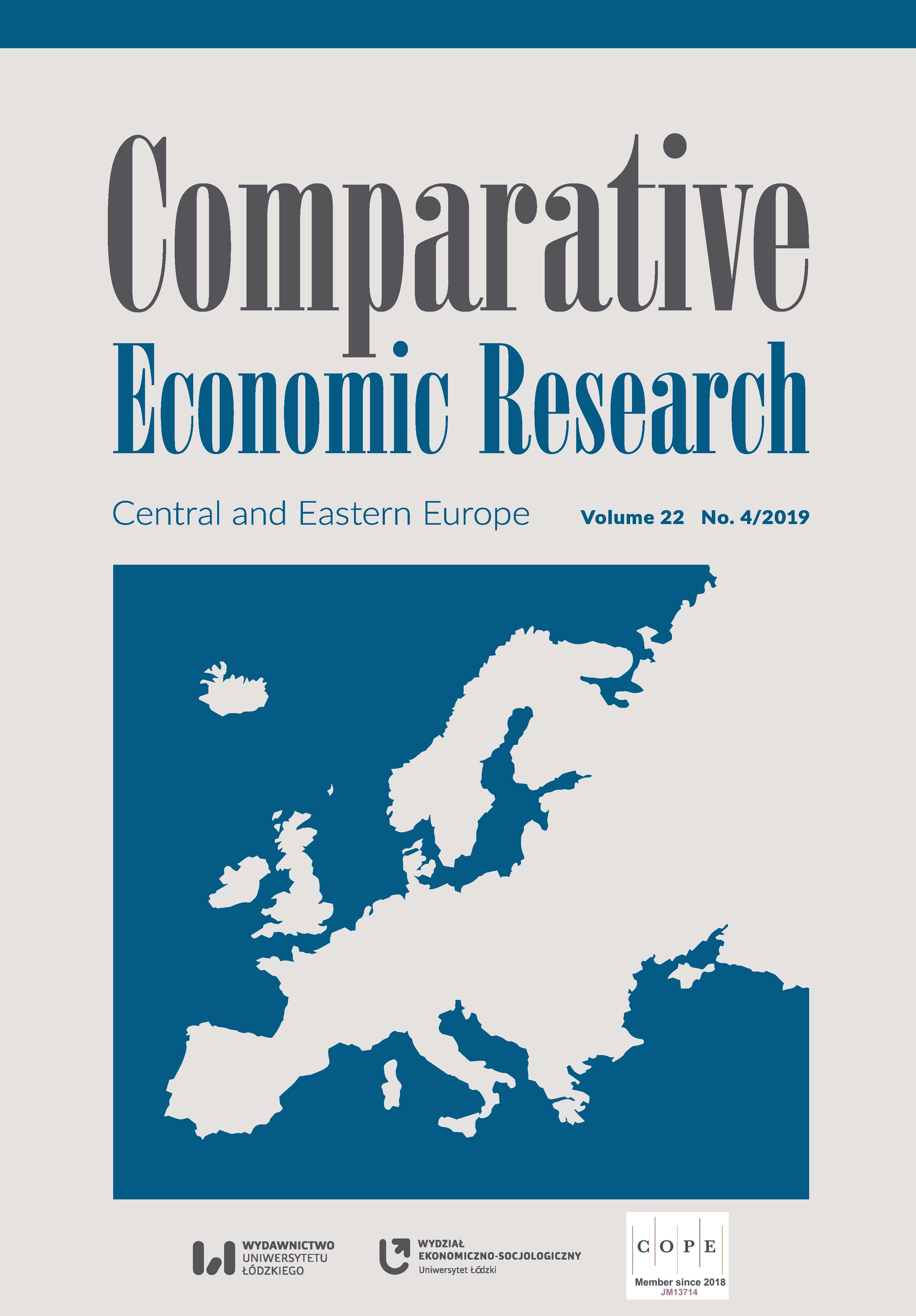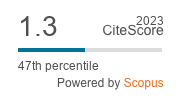Is It the Natural Rate Hypothesis or the Hysteresis Hypothesis for Unemployment Rates in Newly Industrialized Economies?
DOI:
https://doi.org/10.2478/cer-2019-0031Keywords:
natural rate hypothesis, hysteresis hypothesis, unemployment, unit root tests, Fourier function approximation, newly industrialized economiesAbstract
The focus of our study is on determining whether unemployment rates in 8 New Industrialized Economies conform to the natural rate hypothesis or the hysteresis hypothesis. To this end, we employ a variety of unit of unit root testing procedures to quarterly data collected between 2002:q1 and 2017:q1. Summarizing of our findings, conventional unit root tests which account neither for asymmetries nor structural breaks produce the most inconclusive results. On the other hand, tests which incorporate structural breaks while ignoring asymmetries tends to favour the natural rate hypothesis for our panel of countries. However, simultaneously accounting for asymmetries and unobserved structural breaks seemingly produces the most robust findings and confirms hysteresis in all unemployment rates except for Asian economies/countries of Thailand and the Philippines.
Downloads
References
Albulescu, C., Tiwari, A. (2018), Unemployment hysteresis in EU countries: New evidence using bounded unit root tests, “Applied Economic Letters”, 25 (12), pp. 807–810.
Google Scholar
Ayala, A., Cunado, J. and Gil‑Alana, L. (2012), Unemployment hysteresis: Empirical evidence for Latin America, “Journal of Applied Economics”, 15 (2), pp. 213–233.
Google Scholar
Bahmani‑Oskooee, M., Chang, T. and Ranjbar, O. (2018), Testing hysteresis effect in U.S. state unemployment: New evidence using a nonlinear quantile unit root test, Applied Economics Letters, 25 (4), pp. 249–253.
Google Scholar
Bakas, D., Papapetrou, E. (2014), Unemployment in Greece: Evidence from Greek regions using panel unit root tests, “The Quarterly Review of Economic and Finance”, 54 (4), pp. 551–562.
Google Scholar
Becker, R., Enders, W. and Lee, J. (2006), A stationarity test in the presence of an unknown number of smooth breaks, “Journal of Time Series Analysis”, 27 (3), pp. 381–409.
Google Scholar
Blanchard, O. and Summers, L. (1986), Hysteresis and the European unemployment problem, “NBER Macroeconomic Annual”, Vol. 1, MIT Press, Cambridge.
Google Scholar
Bolat, S., Tiwari, A. and Erdayi, A. (2014), Unemployment hysteresis in the Eurozone are: evidences from nonlinear heterogeneous panel unit root test, “Applied Economics Letters”, 21 (8), pp. 536–540.
Google Scholar
Brunello, G. (1990), Hysteresis and “the Japanese unemployment problem”: A preliminary investigation, Oxford Economic Papers, 42, pp. 483–500.
Google Scholar
Chang, T., Yang, M., Liao, H. and Lee, C. (2007), Hysteresis in unemployment: Evidence from Taiwan’s region data based on panel unit root tests, “Applied Economics”, 39 (10), pp. 1335–1340.
Google Scholar
Cheng, S., Wu, T., Lee, K. and Chang, T. (2014), Flexible Fourier unit root test on unemployment for PIIGS countries, “Economic Modelling”, 36(C), pp. 142–148.
Google Scholar
Christopoulos, D. and Leon‑Ledesma, M. (2010), Smooth breaks and non‑linear mean reversion: Post‑Bretton Woods real exchange rates, “Journal of International Money and Finance”, 29 (6), pp. 1076–1093.
Google Scholar
Cuestas, J., Gil‑Alana, L. and Staehr, K. (2011), A further investigation of unemployment persistence in European transition economies, “Journal of Comparative Economics”, 39 (4), pp. 514–532.
Google Scholar
Davies, R. (1987), Hypothesis testing when a nuisance parameter is present only under the alternative, “Biometrika”, 74 (1), pp. 33–43.
Google Scholar
Enders, W. and Lee, J. (2012), The flexible Fourier form and Dickey‑Fuller type unit root tests, Economic “Letters”, 117, pp. 196–199.
Google Scholar
Friedman, M. (1968), The role of monetary policy, “American Economic Review”, 58 (1), pp. 213–217.
Google Scholar
Friedman, M. (1977), Nobel lecture: Inflation and unemployment, “The Journal of Political Economy”, 85 (3), pp. 451–472.
Google Scholar
Furoka, F. (2014), Are unemployment rates stationary in Asia‑Pacific countries? New findings from Fourier ADF test, “Economic Research‑Ekonomska Istrazivanja”, 27 (1), pp. 34–45.
Google Scholar
Furoka, F. (2017), A new test for analysis hysteresis in European unemployment, “Applied Economic Letters”, 24 (15), pp. 1102–1106.
Google Scholar
Galliant, R. (1981), On the basis in flexible functional form and an essentially unbiased form: the flexible Fourier form, “Journal of Econometrics”, 15 (2), pp. 211–245.
Google Scholar
Garcia‑Cintado, A., Romero‑Avila, D. and Usabiaga, C. (2015), Can the hysteresis hypothesis in Spanish regional unemployment be beaten? New evidence from unit root tests with breaks, “Economic Modelling”, 47, pp. 244–252.
Google Scholar
Gomes, F. and da Silva, C. (2008), Hysteresis vs natural rate of unemployment in Brazil and Chile, “Applied Economic Letters”, 15 (1), pp. 53–56.
Google Scholar
Gustavsson, M. and Osterholm, P. (2006), Hysteresis and non‑linearities in unemployment rates, Applied “Economics Letters”, 13 (9), pp. 545–548.
Google Scholar
Hall, R. (1979), A theory of the natural unemployment rate and the duration of unemployment, “Journal of Monetary Economics”, 5, pp. 153–170.
Google Scholar
Kapetanios, G., Shin, Y. and Snell, A. (2003), Testing for a unit root in the nonlinear STAR framework, “Journal of Econometrics”, 112 (2), pp. 359–379.
Google Scholar
Kruse, R. (2009), A new unit root test against ESTAR based on a class of modified statistics, “Statistical Papers”, 52 (1), pp. 71–85.
Google Scholar
Lanzafame, M. (2010), The nature of regional unemployment in Italy, “Empirical Economics”, 39, pp. 877–895.
Google Scholar
Lee, C. (2010), Testing for unemployment hysteresis in nonlinear heterogeneous panels: International evidence, “Economic Modelling”, 27 (5), pp. 1097–1102.
Google Scholar
Lee, J. and Strazicich, M. (2004), Minimum Lagrange multiplier unit root with two structural breaks, “The Review of Economics and Statistics”, 85 (4), pp. 1082–1089.
Google Scholar
Lee, J. and Strazicich, M. (2013), Minimum LM unit root with one structural break, “Economics Bulletin”, 33 (4), pp. 2483–2493.
Google Scholar
Leon‑Ledesma, M. and McAdam, P. (2004), Unemployment, hysteresis and transition, “Scottish Journal of Political Economy”, 51 (3), pp. 377–401.
Google Scholar
Li, J., Ranjbar, O. and Chang, T. (2017), Unemployment hysteresis n PIIGS countries: A new test with both sharp and smooth breaks, “The Singapore Economic Review”, 62 (5), pp. 1165–177.
Google Scholar
Lindbeck, A. and Snower, D. (1988), Cooperation, harassment, and involuntary unemployment: An insider‑outside appraoch, “America Economic Review”, 78 (1), pp. 167–188.
Google Scholar
Liu, D., Sun, C. and Lin, P. (2012), Hysteresis hypothesis in unemployment and labour force participation rates: Evidence from Australian states and territories, “Australian Economic Papers”, 51 (2), pp. 71–84.
Google Scholar
Lumsdaine, R. and Papell, D. (1997), Multiple trend breaks and the unit‑root hypothesis, “Review of Economics and Statistics”, 79 (2), pp. 212–218.
Google Scholar
Marques, A., Lima, G. and Troster, V. (2017), Unemployment persistence in OECD countries after the Great Recession, “Economic Modelling”, 64, pp. 105–116.
Google Scholar
Mednik, M., Rodriguez, C. and Ruprah, I. (2012), Hysteresis in unemployment: Evidence from Latin America, “Journal of International Development”, 24 (4), pp. 448–466.
Google Scholar
Meng, M., Strazicich, M. and Lee, J. (2017), Hysteresis in unemployment? Evidence from linear nonlinear unit root tests and tests with non‑normal errors, “Empirical Economics”, 53 (4), pp. 1399–1414.
Google Scholar
Mitchell, W. (1993), Testing for unit roots and persistence in OECD unemployment rates, “Applied Economics”, 25 (12), pp. 1489–1501.
Google Scholar
Nelson, C. and Plosse, C. (1982), Trends and random walks in macroeconomic time series: Some evidence and implications, “Journal of Monetary Economics”, 10 (2), pp. 139–162.
Google Scholar
Perron, P. (1989), The great crash, the oil price shock, and the unit root hypothesis, “Econometrica”, 57 (6), pp. 1361–1401.
Google Scholar
Phelps, E. (1967), Phillips curves, expectations of inflation and optimal unemployment over time, “Economica”, 34 (135), pp. 254–281.
Google Scholar
Phelps, E. (1968), Money‑wage dynamics and labor‑market equilibrium, “Journal of Political Economy”, 76 (4), pp. 678–711.
Google Scholar
Phillips, A. (1958), The relation between unemployment and the rate of change of money wage rates in the United Kingdom, 1861–1957, “Economica”, 25 (100), pp. 283–299.
Google Scholar
Rodrigues, P. and Taylor, R. (2012), The flexible Fourier form and local generalized least squares de‑trending unit root tests, “Oxford Bulletin of Economics and Statistics”, 74 (5), 7, pp. 36–759.
Google Scholar
Roed, K. (1996), Unemployment hysteresis – Macro evidence from 16 OECD countries, “Empirical Economics”, 21 (4), pp. 589–600.
Google Scholar
Song, F. and Wu, Y. (1997), Hysteresis in unemployment: Evidence from 48 U.S. states, “Economic Inquiry”, 35 (2), pp. 235–243.
Google Scholar
Song, F. and Wu, Y. (1998), Hysteresis in unemployment: Evidence from OECD countries, “The Quarterly Review of Economics and Finance”, 38 (2), pp. 181–192.
Google Scholar
Smyth, R. (2003), Unemployment hysteresis in Australian states and territories: Evidence from panel data unit root tests, “Australian Economic Review”, 36 (2), pp. 181–192.
Google Scholar
Ucar, N. and Omay, T. (2009), Testing for unit root in nonlinear heterogeneous panels, “Economic Letters”, 104 (1), pp. 5–8.
Google Scholar
Yilanci, V. (2008), Are unemployment rates non‑stationary or non‑linear? Evidence from 19 OECD countries, “Economic Bulletin”, 3 (47), pp. 1–5.
Google Scholar
Zivot, E. and Andrews, Donald W.K. (1992), Further evidence on the Great Crash, the oil‑price shock, and the unit‑root hypothesis, “Journal of Business and Economic Statistics”, 10 (3), pp. 251–270.
Google Scholar
Downloads
Published
How to Cite
Issue
Section
License

This work is licensed under a Creative Commons Attribution-NonCommercial-NoDerivatives 4.0 International License.











